We may earn revenue from the products available on this page and participate in affiliate programs. Learn More ›
As we collectively expand our appreciation for the planet, shopping for eco-friendly products has never been an easier way to make an impact. According to a recent study from GreenPrint, about two-thirds of Americans prefer to spend a little extra on eco-friendly or sustainable products, but over three-quarters of respondents don’t know how to identify them.
While many eco-friendly products tend to be labeled as green or sustainable, it’s important to read the packaging or do your research to determine if it’s part of “greenwashing” (which is where a brand simply says it’s sustainable for marketing purposes) or if the product truly is better for the environment. Maybe the brand uses renewable resources, doesn’t ship long distances, or omits wasteful packaging and harmful pollutants.
To help you out, we’ve done the work for you and scoured the internet for some of the best eco-friendly products of 2024 to shop right now, from Tushy bidet attachments to Lifestraw personal water filters.
1. Liquid Detergent

Harsh chemicals might be doing more harm than good when it comes to you and your clothes. Opt instead for our expert’s most highly recommended eco-friendly and hypoallergenic laundry detergent from Ecos. Each container deep cleans up to 100 loads of laundry, and it also works wonders as a stain treatment. Plus, it’s not tested on animals and uses only seven ingredients—none of which are animal-derived.
Get the Ecos Laundry Detergent (2-pack) at Amazon for $23.73.
2. Clean Home Kit

Between all the single-use packaging and questionable ingredients, finding eco-friendly cleaning products can be tough. Save your sanity and the planet with the ever-popular Blueland cleaning kit. It contains three reusable bottles and three eco-friendly tablets that dissolve in water to turn into powerful (and safe!) cleaning products.
Get the Blueland Clean Home Kit at Amazon for $38.99.
3. Collapsible Travel Cup
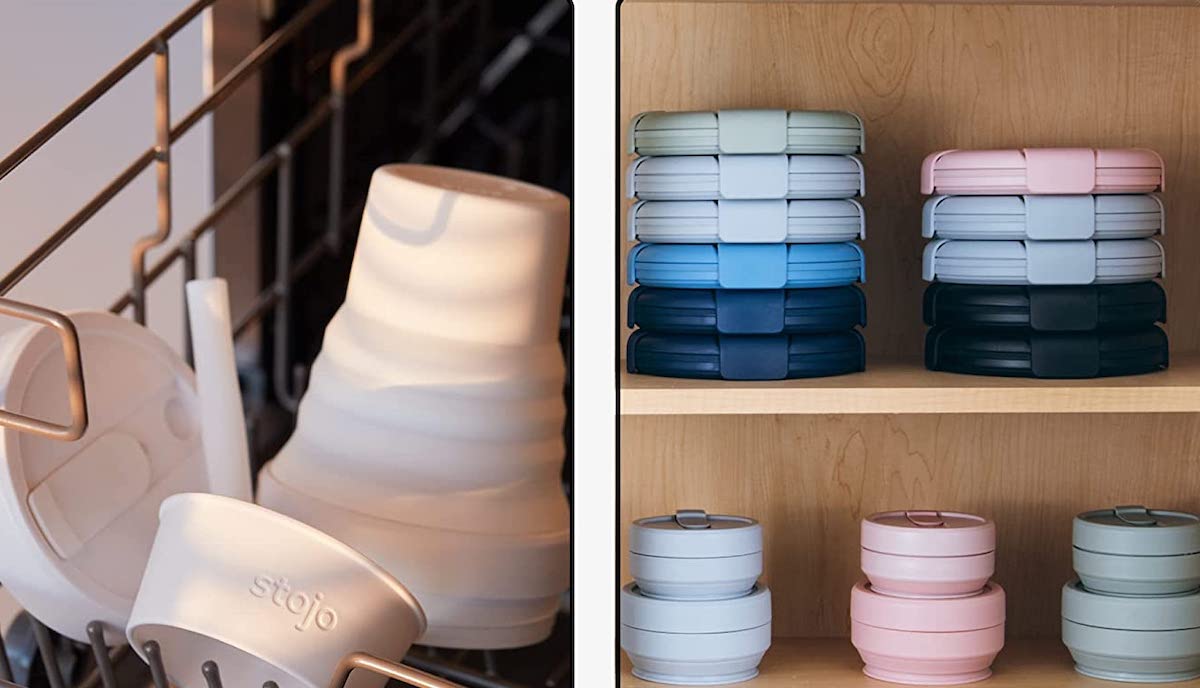
If your daily Starbucks habit is starting to weigh on you from an ethical perspective, be sure to bring your Stojo along for the ride. The reusable and collapsible cup is made of food-grade silicone that supports both hot and cold beverages. It also comes in 12-, 16-, or 24-ounce sizes, and it’s available in more than 20 colors from steel blue to sage.
Get the Stojo Collapsible Travel Cup at Amazon for $14.95.
4. Reusable Storage Bags
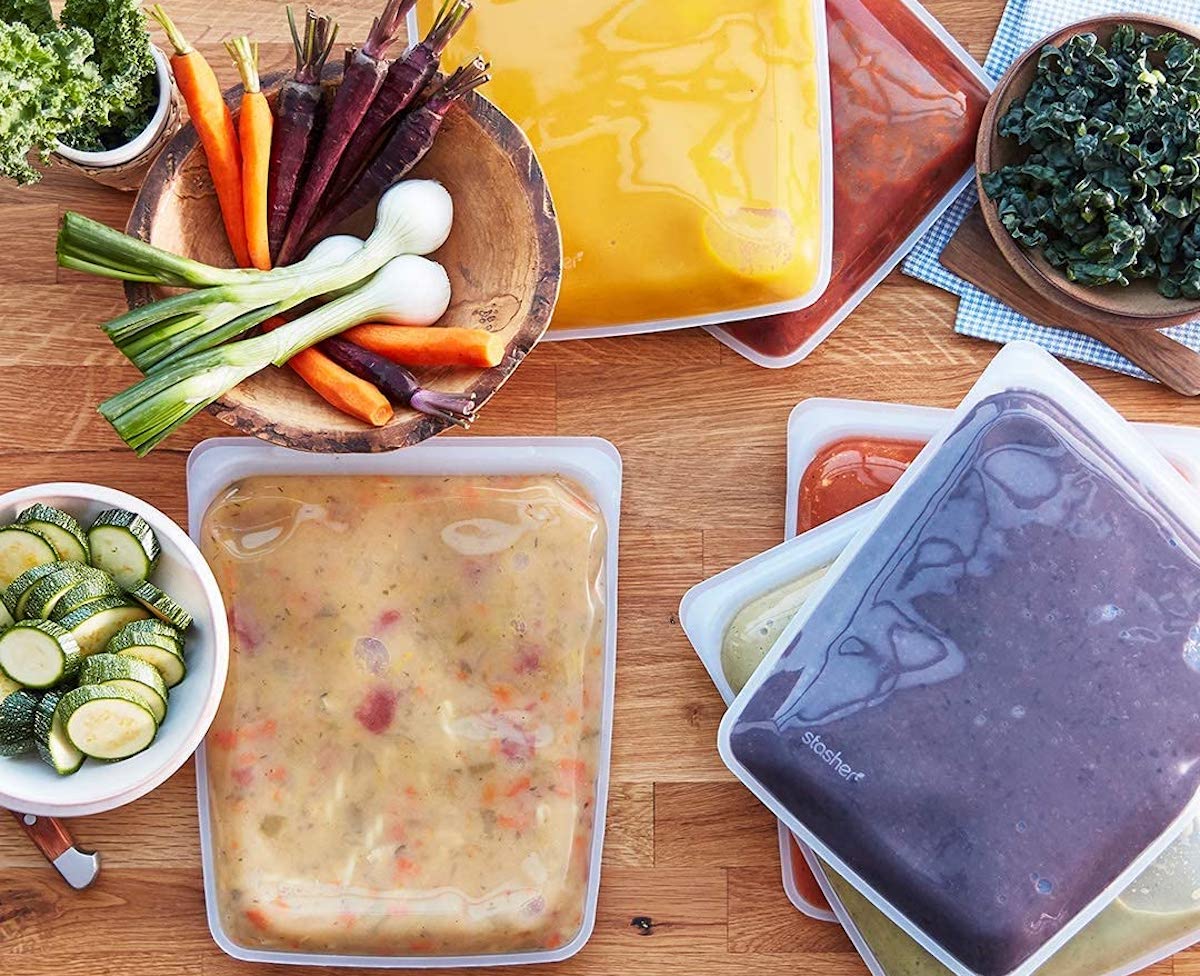
Made of nontoxic, hypoallergenic, and temperature-resistant silicone, reusable Stasher storage bags make a great alternative to single-use plastic. The dishwasher-safe bags are available in all the usual sizes—half gallon, sandwich, snack, and more—for all your freezing, thawing, baking, microwaving and even sous-vide cooking needs.
Get the Stasher Half-Gallon Reusable Storage Bag at Amazon for $17.74.
5. Personal Water Filter
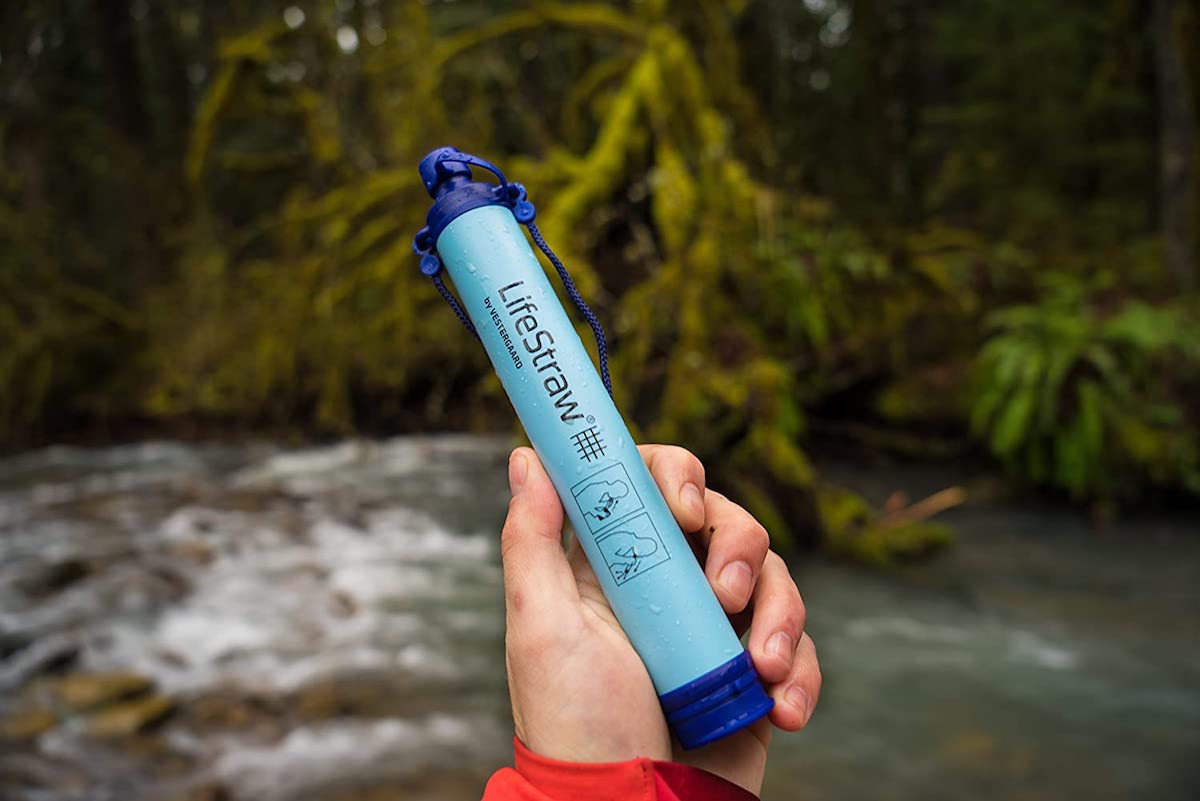
Plastic water bottles can wreak major havoc on the planet and your wallet. Turn every water source on your next hiking or camping trip into a drinking-safe one with the award-winning Lifestraw. The handheld device operates as a personal water filter by removing over 99.99 percent of waterborne bacteria, parasites, and microplastics so you can stay hydrated wherever you go.
Get the Lifestraw Personal Water Filter at Amazon for $14.97.
6. Reusable Food Wraps
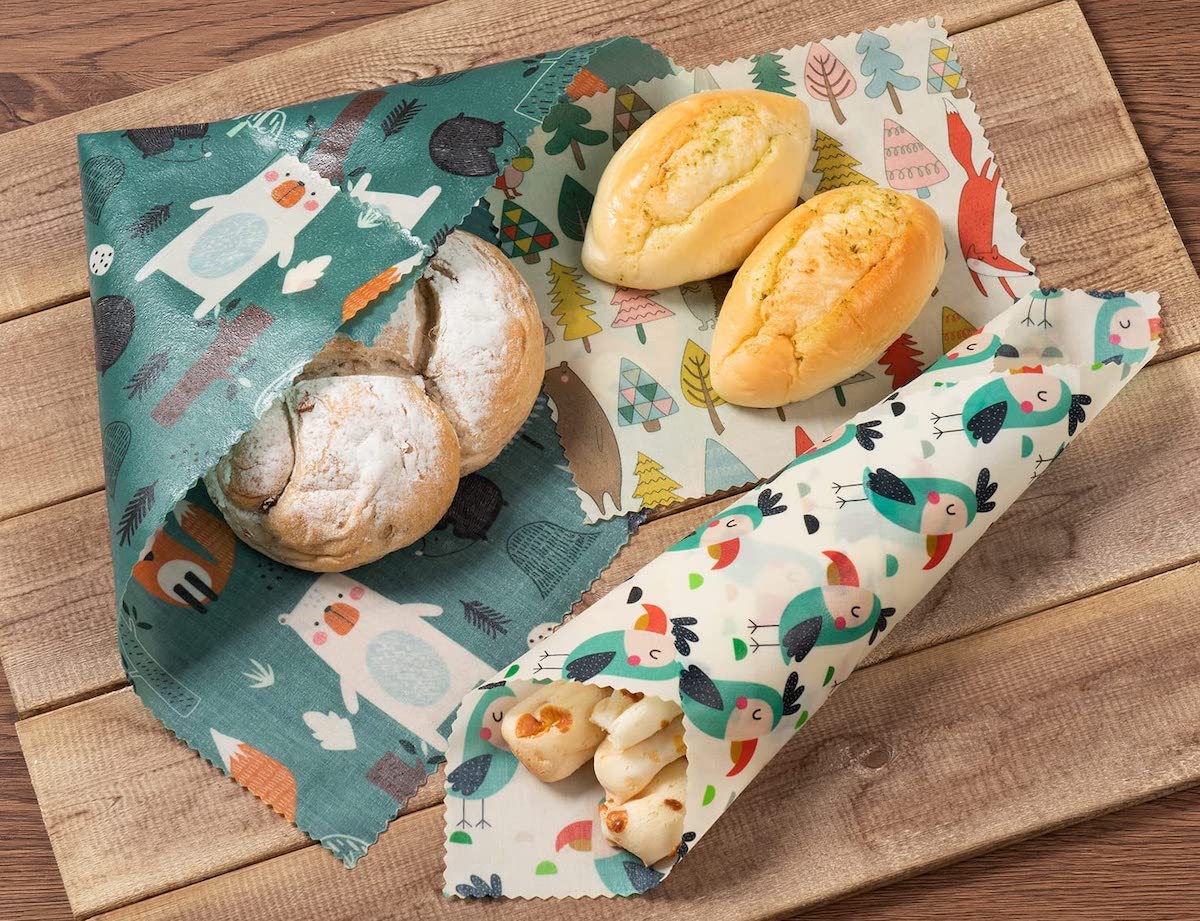
Instead of dealing with finicky single-use plastic wraps, grab these playful reusable food wraps made of organic cotton, ethically harvested beeswax, tree resin, and jojoba oil. Available in small, medium, and large sizes, they create a natural seal using the warmth of your hands. Plus, their unique patterns, from forest animals to boho flowers, make the food-packing process fun.
Get the Akeeko Reusable Food Wraps (9-pack) at Amazon for $13.99.
7. Bidet Attachment
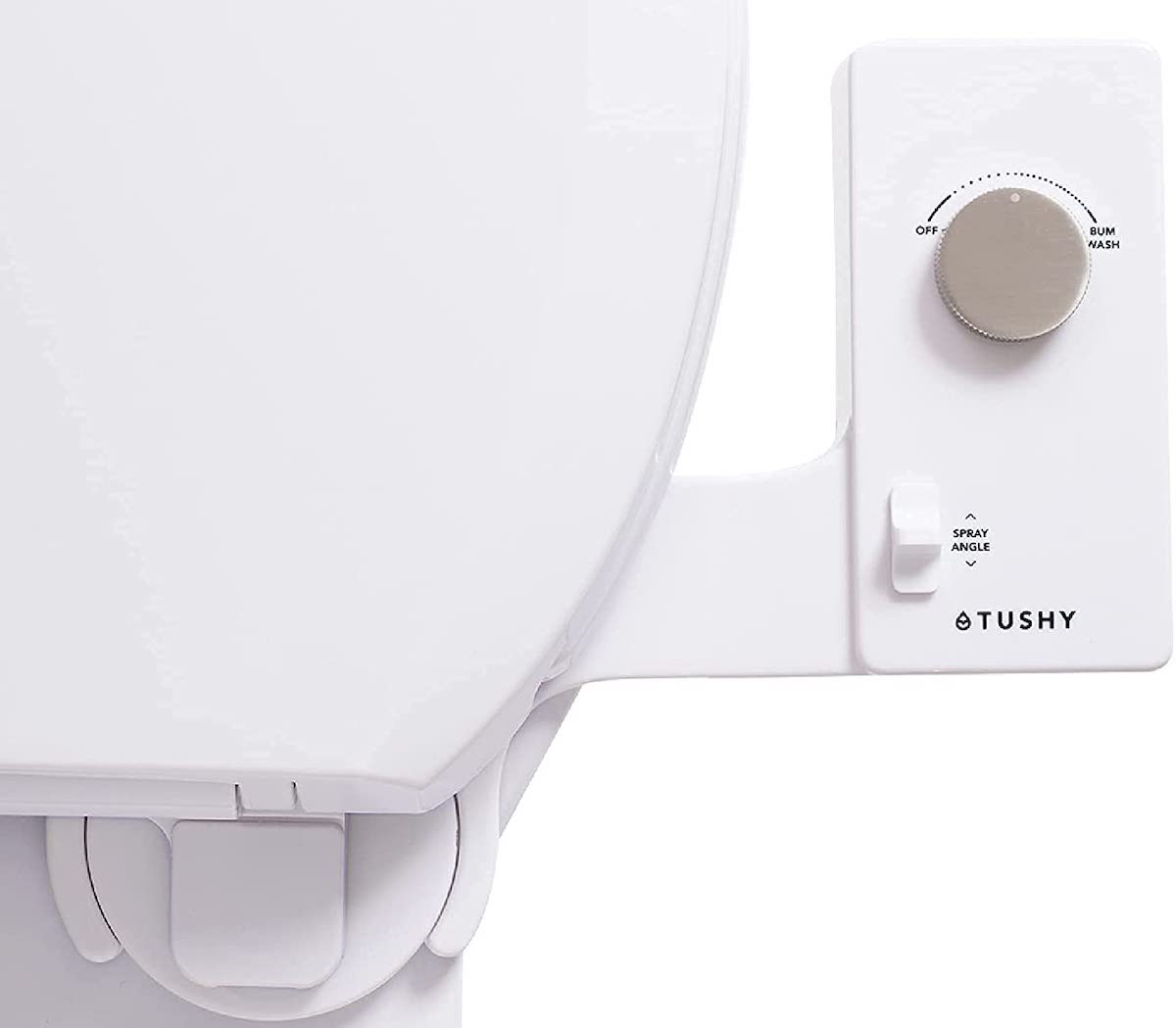
A bidet is a sustainable and hygienic solution to toilet paper: The reviewer-approved Tushy bidet attachment is designed to cut down your toilet paper usage by 80 percent and clips easily onto your toilet. You can select your knob style, ranging from bamboo to platinum, and take advantage of its water pressure options for a long-lasting clean feeling.
Get the Tushy Classic 3.0 Bidet Attachment at Amazon for $114.35.
8. Biodegradable Toothbrushes
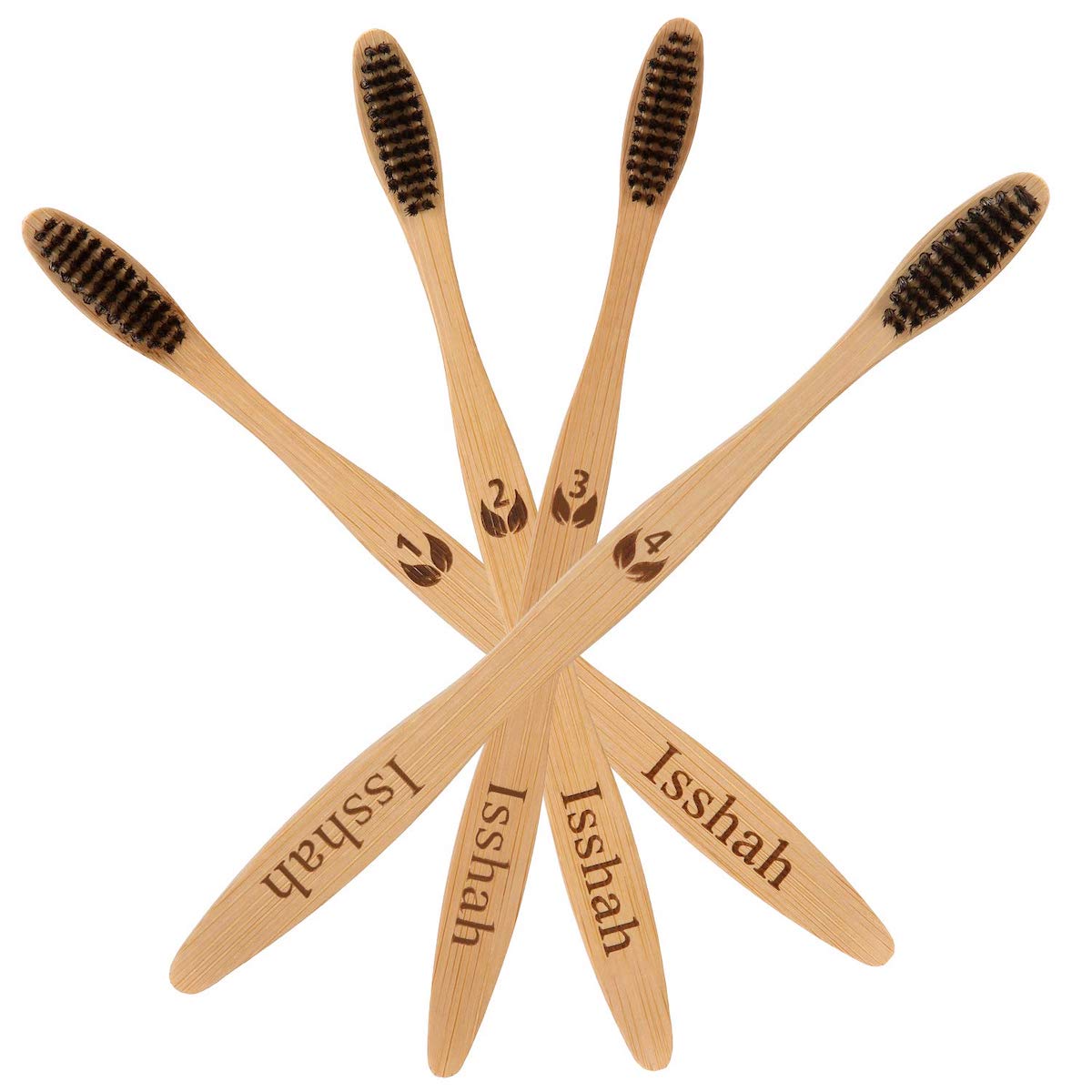
Most toothbrushes are made entirely of plastic and can decompose for centuries (up to 500 years!). Bamboo toothbrushes degrade in a fraction of the time—decomposing in under a year. Maintain your peace of mind and your oral hygiene with these popular eco-friendly toothbrushes. Each handle is made from splinter-proof and sustainable bamboo that dries easily and won’t accumulate mold.
Get the Isshah Biodegradable Bamboo Toothbrushes (12-pack) at Amazon for $7.99.
9. Washable Rug
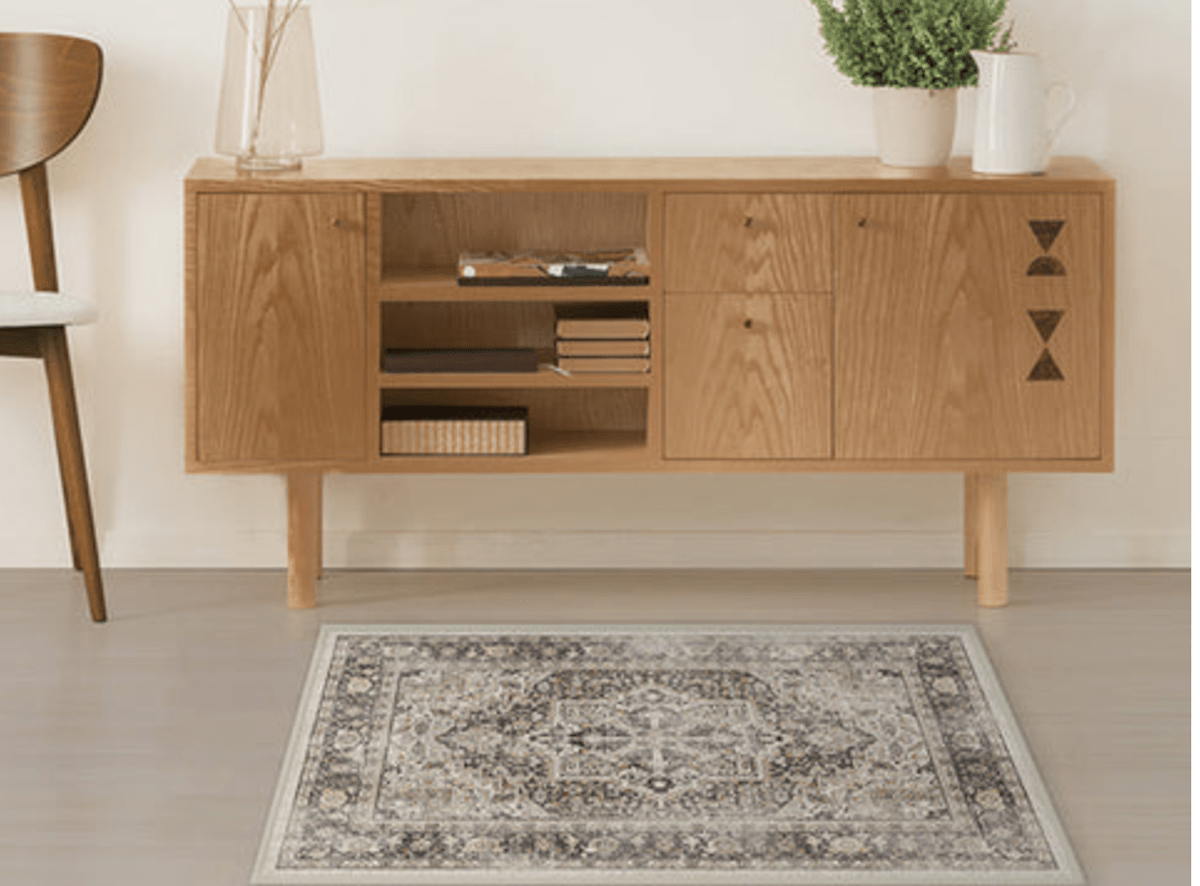
Ruggable is one of the hottest brands in the home space, known for its durable and easy-to-maintain rugs. Each rug is machine-washable, which means you can easily clean your rug at home and rely on your washer to remove muck and stains. This also means fewer replacements (especially in those high-traffic areas prone to spills) and less waste in landfills. This Ruggable best-seller comes in multiple shapes, shades, and sizes to help you choose the right look for your home.
Get the Kamran Hazel Rug at Ruggable starting at $89.
10. Bamboo Standing Desk
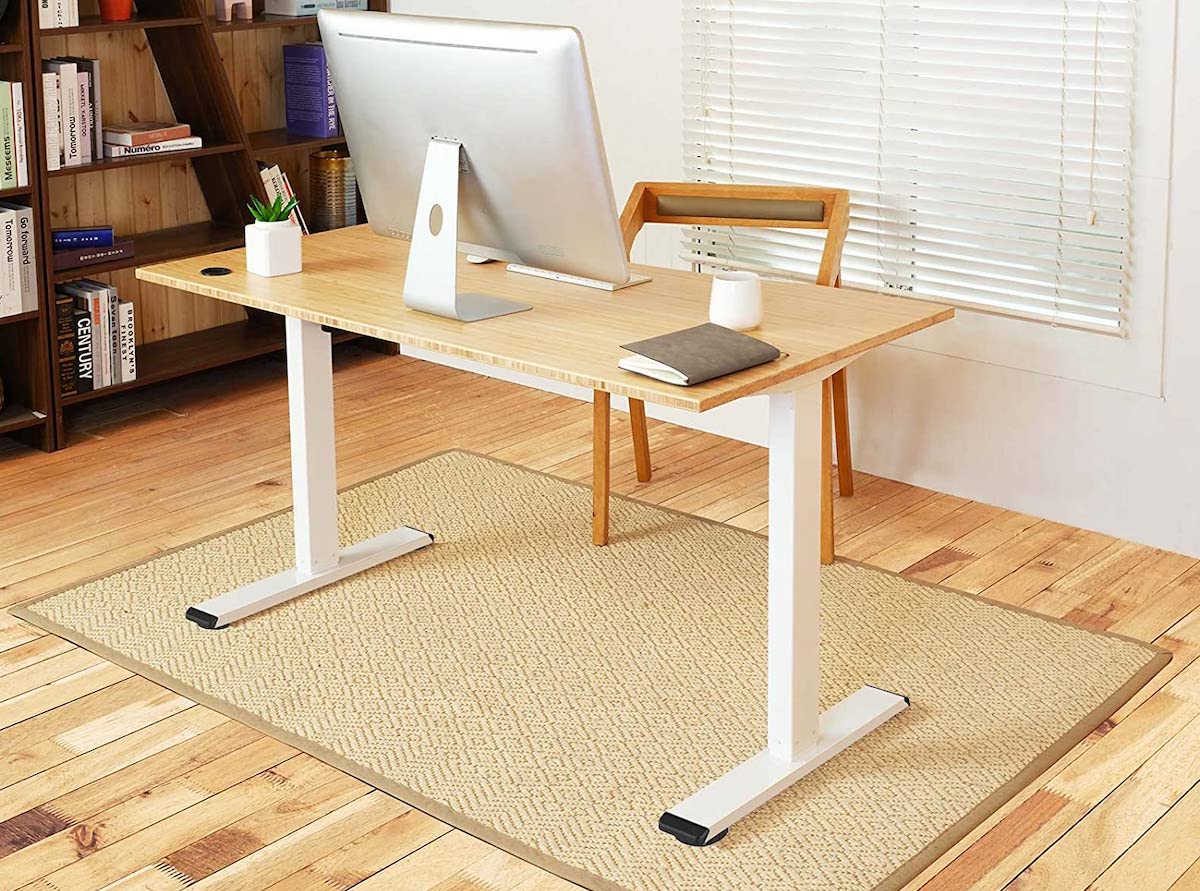
Elevate your work-from-home setup with this sustainable standing desk. The durable bamboo desk comes in two shapes: rectangle and ergonomic curved. It’s available in five sizes and has an electric height-adjustable lift system that reaches a maximum height of 47.6 inches. The bamboo tabletop is a great alternative to wood, and it’s mold- and warp-resistant to last through many work days.
Get the Flexispot Kana Bamboo Standing Desk at Amazon for $323.99.
11. Liquidless Laundry Detergent
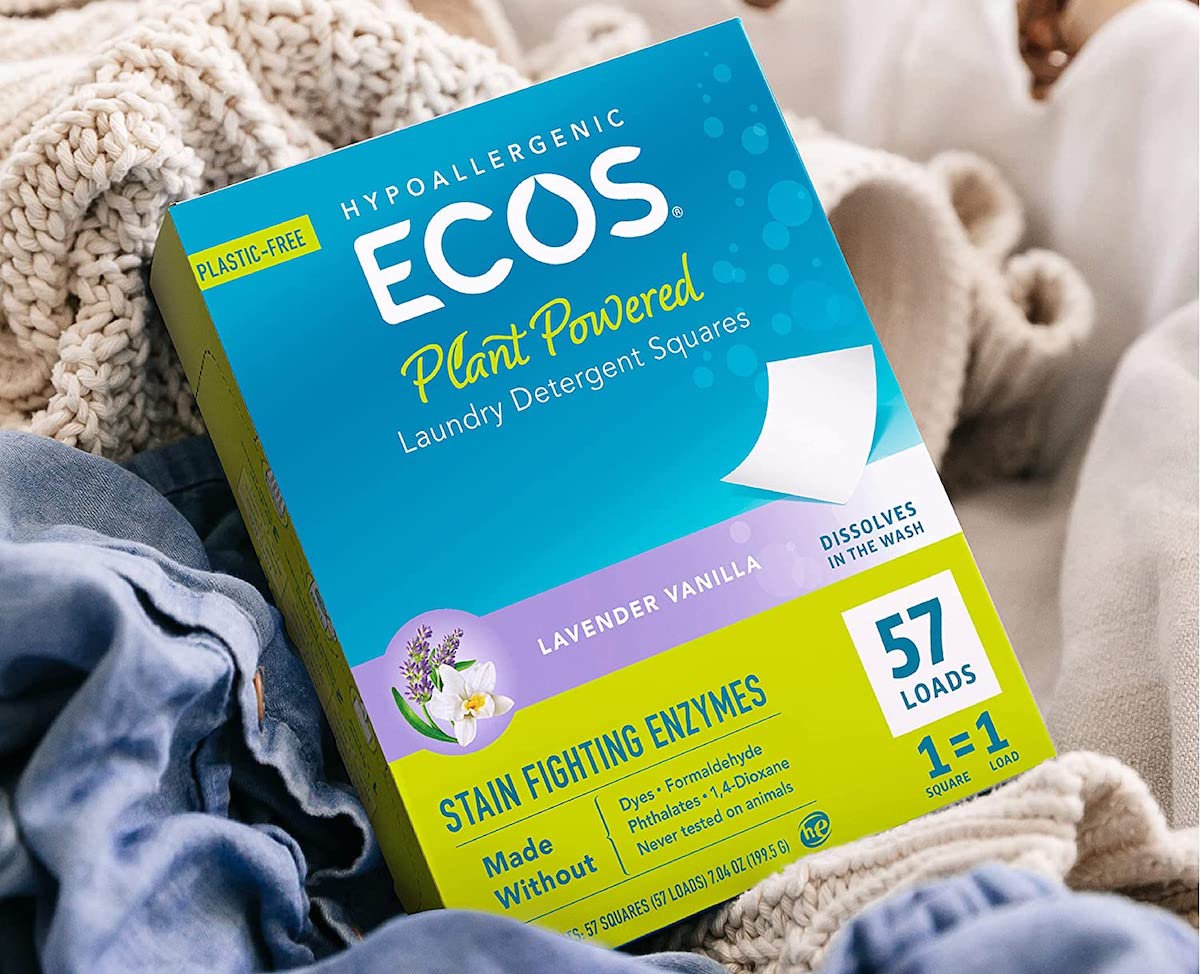
While laundry detergent cleans your clothes, it doesn’t exactly clean the planet. Opt instead for these concentrated lavender vanilla detergent squares that remove the need for plastic bottles. These plant-powered detergent sheets are made without any dyes, parabens, or other unsafe chemicals and instead use natural enzymes to lift dirt from your clothes.
Get the Ecos Next Liquidless Laundry Detergent (2-pack) at Amazon for $26.19.
12. Reusable Makeup Remover Pads
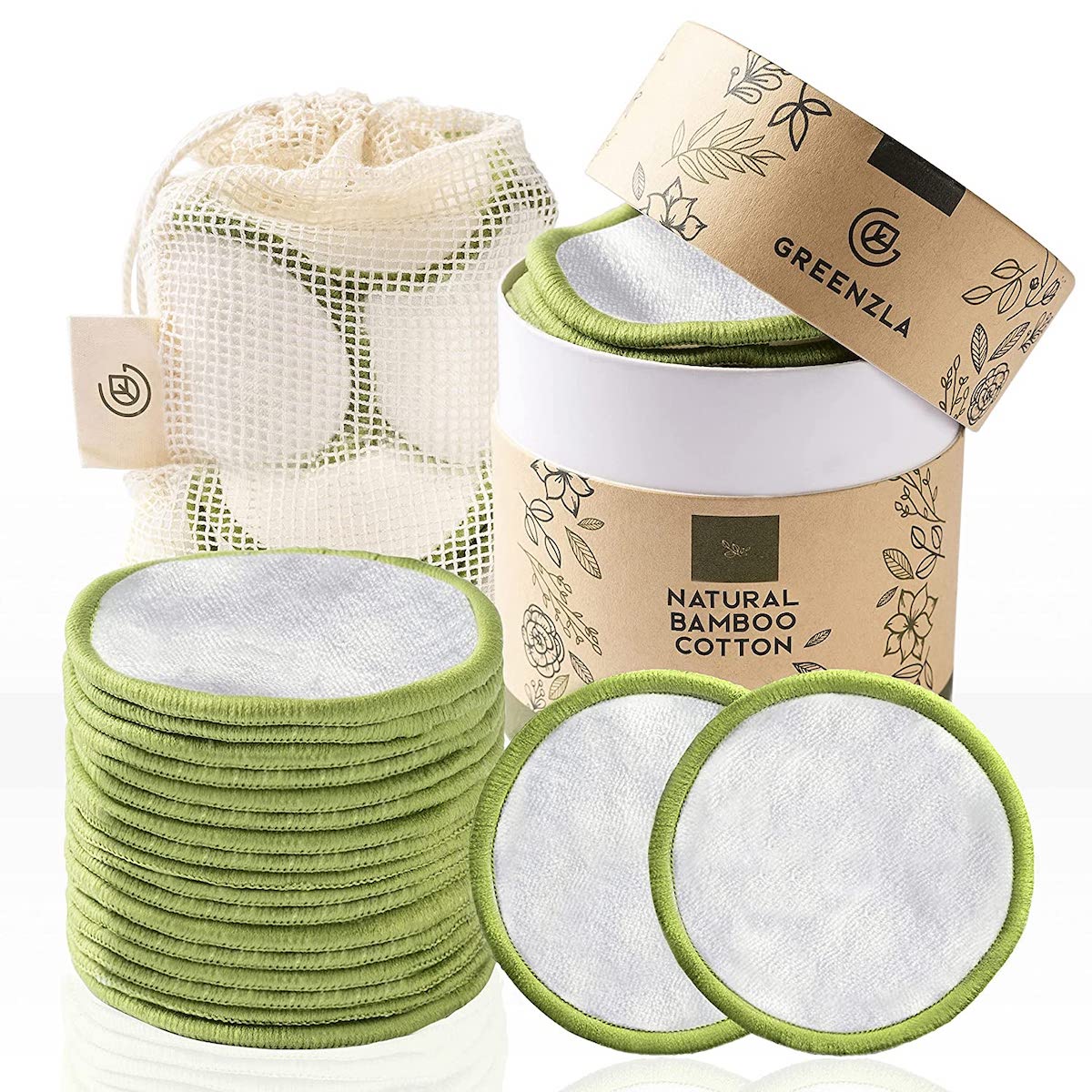
Do your part in protecting the planet with these zero-waste makeup remover pads. Made of natural bamboo cotton, they are suitable for the eyes, face, lips, and neck. They’re an ideal addition to your primping routine and come with a drawstring-lined mesh bag to keep them organized.
Get the Greenzla Reusable Makeup Remover Pads (20-pack) at Amazon for $9.99.
13. Reusable Grocery Bags
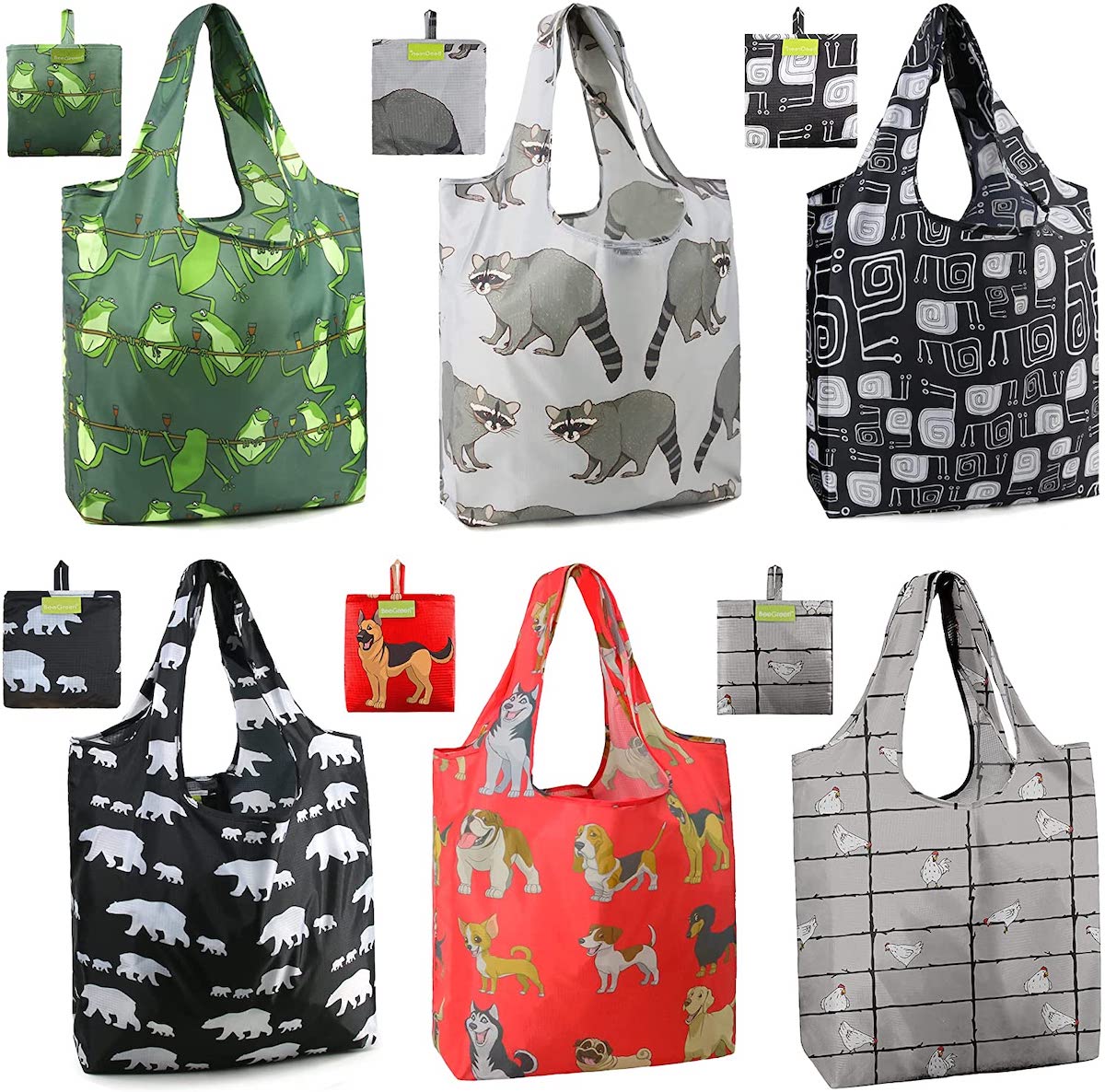
Single-use plastic grocery bags are a major source of waste, and you likely already have a pile of them taking up space under the kitchen sink. Switch to a more sustainable option with this set of six foldable and reusable grocery bags. They’re made with a ripstop fabric, and each one supports 50 pounds. They feature roomy pockets, and each one folds into an attached mini pouch when not in use. The bags are available in many patterns, too.
Get the BeeGreen Foldable Reusable Grocery Bags (6-pack) at Amazon for $20.99.
14. Compostable Wipes
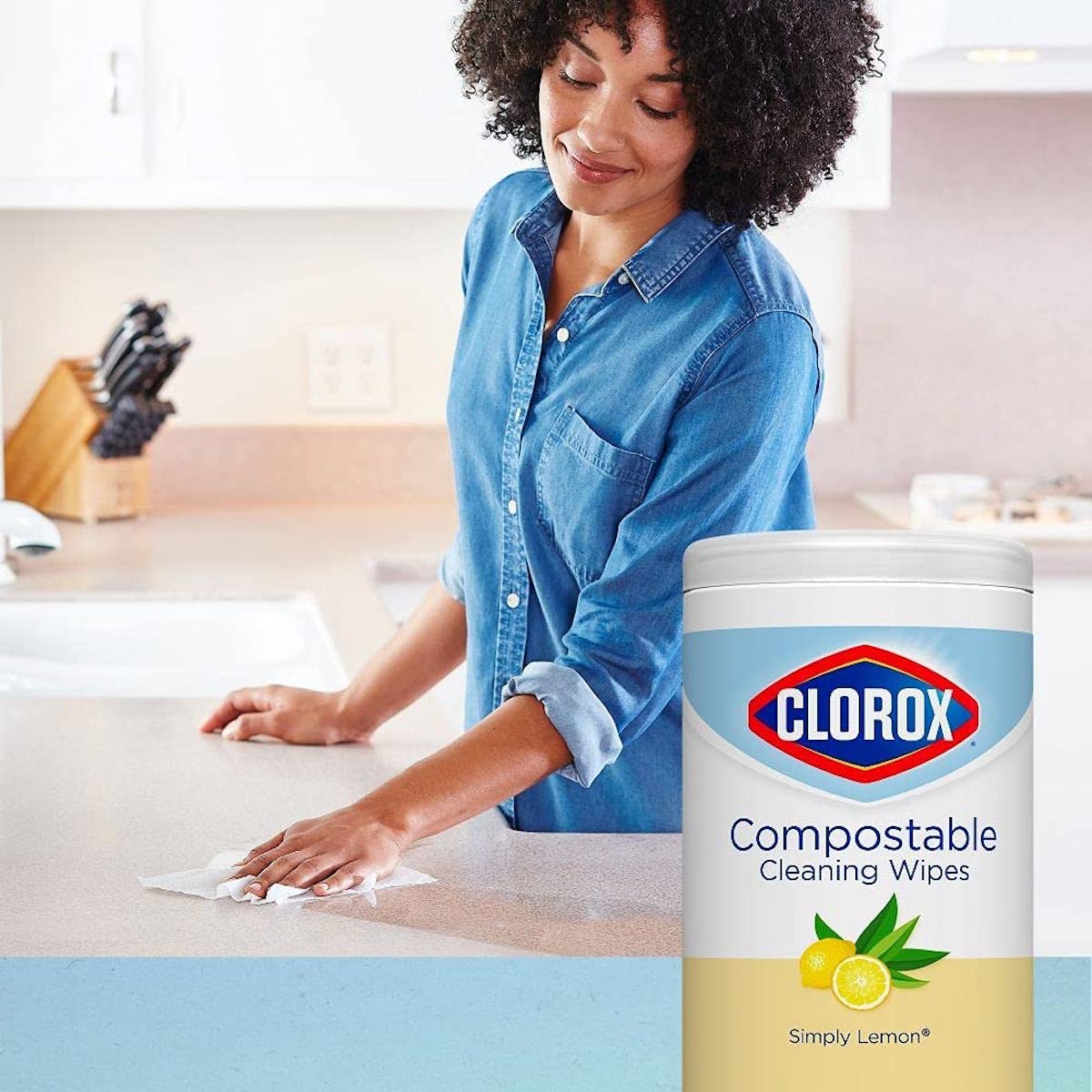
Disinfecting wipes are sometimes a necessity, but they’re not ideal if you’re trying to cut back on disposable items. Grab these compostable unscented Clorox wipes made of natural plant-based fibers that are safe to use around kids, pets, and food. They’re also suitable for most sealed surfaces like wood and granite. Since they’re EPA Safer Choice certified and compostable in a municipal composting facility, they’re a step above regular disposable wipes in terms of sustainability.
Get the Clorox Compostable Wipes (3-pack) at Amazon for $21.39.
15. Organic Wool Dryer Balls
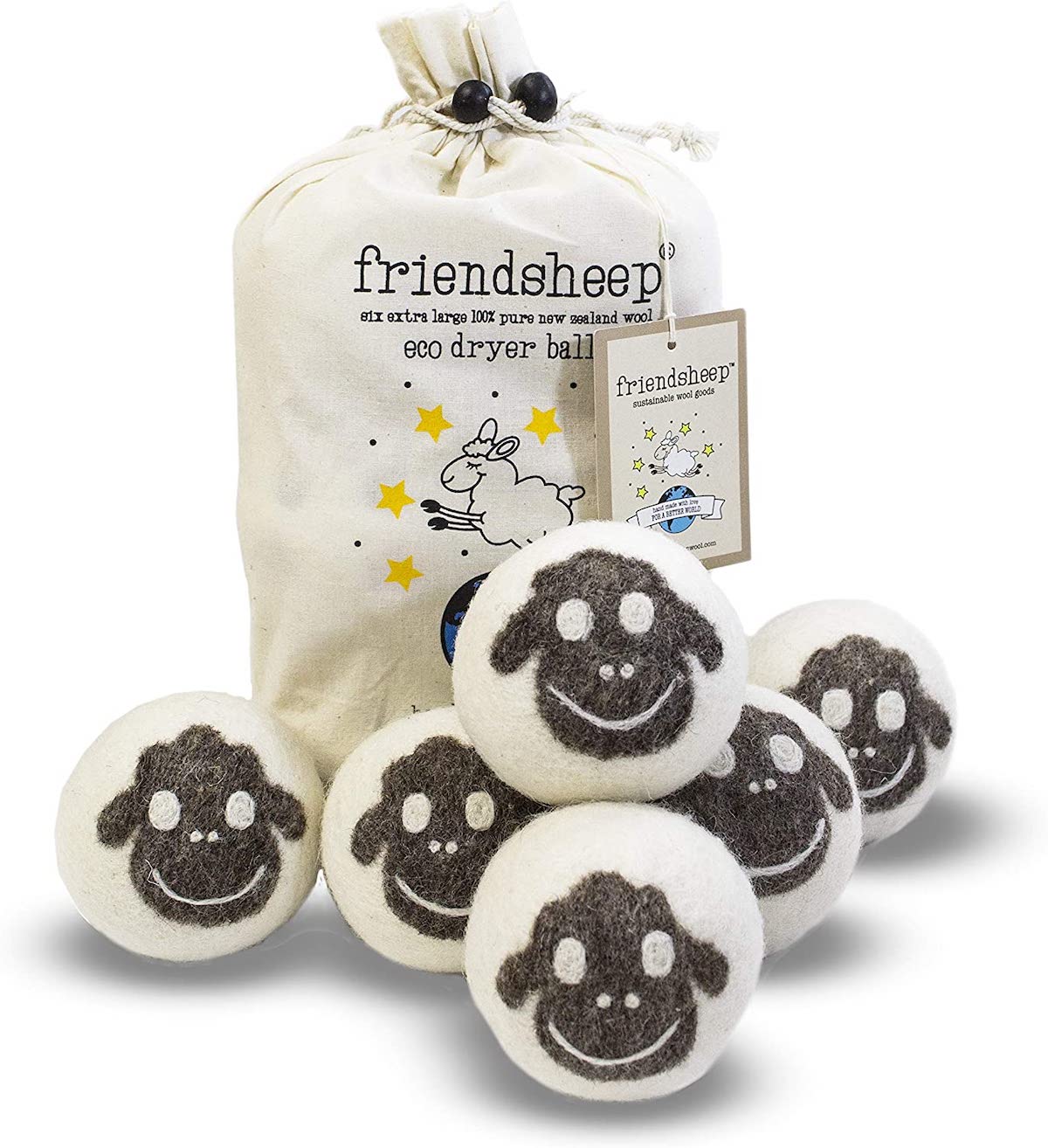
Not only do dryer balls cut your laundry’s drying time by up to 40 percent, but they also make your clothes come out with a lot fewer wrinkles. Our expert raves over these Friendsheep dryer balls, which are made of pure New Zealand wool that’s ideal for sensitive skin types. They’ll stay strong for over 1,000 loads, and the more balls you use in one cycle, the better they work.
Get the Friendsheep Organic Eco Wool Dryer Balls (6-pack) at Amazon for $32.
16. Iced Coffee Maker

There’s a lot that makes this coffee maker a more sustainable solution. It comes with a reusable coffee filter (which means no more wasting those paper funnels), includes a reusable BPA-free coffee tumbler to carry around your iced coffee in style, and comes with a measuring scoop to prepare the perfect cup of joe. Replace your daily take-out iced coffee with this coffee system to eliminate that take-out cup and save money, too.
Get the Mr. Coffee Iced Coffee Maker at Amazon for $26.40.
17. Swedish Dishcloths
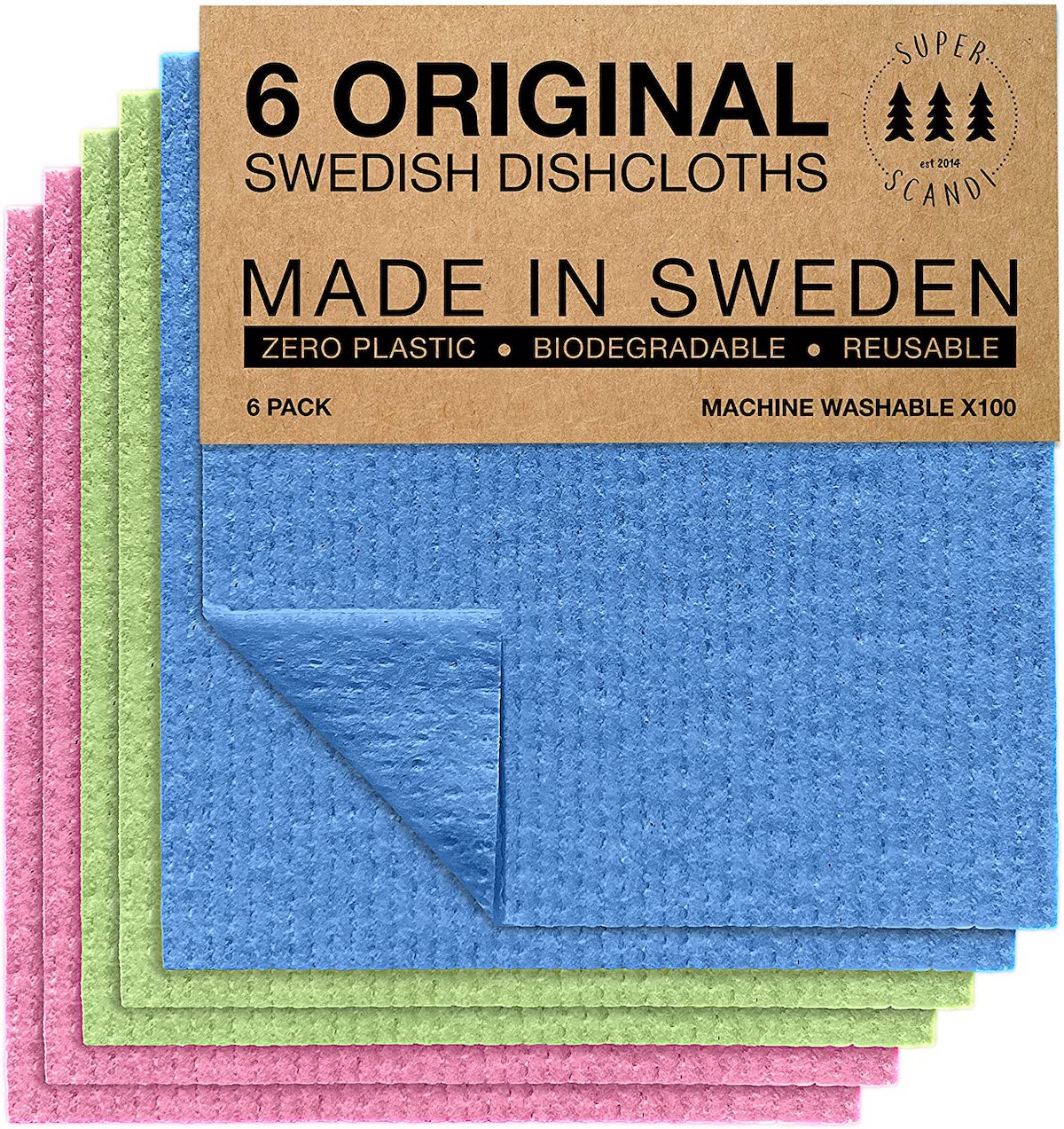
Acting quickly to clean up spills or messes typically means reaching for a single-use paper towel. Get the best of both worlds with these highly absorbent Swedish dishcloths. The cloths are biodegradable, reusable, and machine-washable, and one cloth can replace 15 rolls of paper towels.
Get the Superscandi Swedish Dishcloths (6-pack) at Amazon for $14.95.
18. Recycled Paper Towels
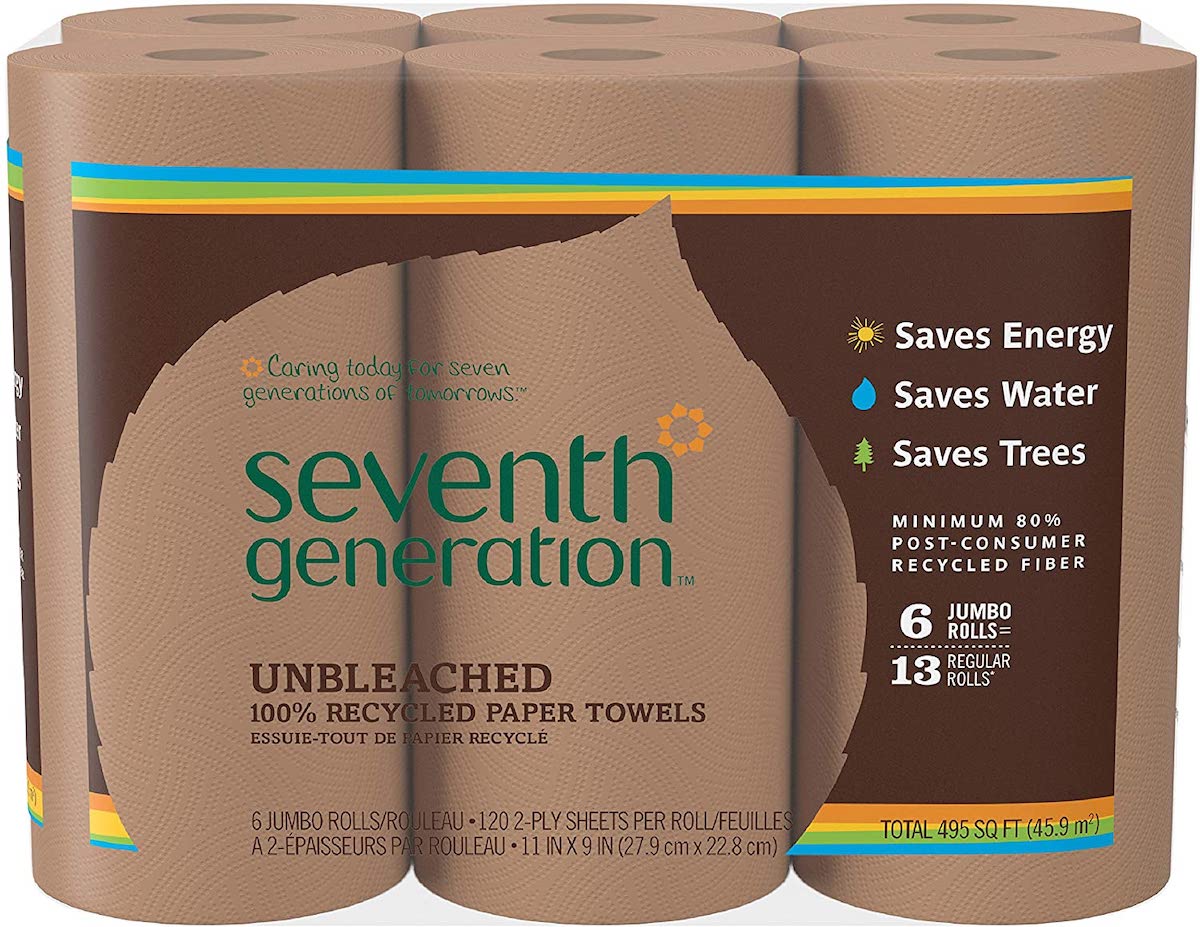
Messes are inevitable, and some particularly grimy messes call for paper towels. If you’re going to use paper towels, ensure they’re made with 100 percent recycled paper, like this popular option from Seventh Generation. These paper towels are also free of inks, dyes, or fragrances, and less energy and water is required to produce them. Even so, they still boast great cleaning abilities.
Get the Seventh Generation Unbleached Paper Towels (6-pack) at Amazon for $55.06.
19. Compostable Hemp Sponges

When you’re constantly cooking and washing dishes, your sponges can deteriorate quickly, leading to lots of waste. These eco-friendly plant-based sponges are a more sustainable alternative, made of biodegradable cellulose and coconut fibers. Made without plastic and packaged in an affordable 12-pack, they’re kind to the planet and your wallet.
Get the Airnex Natural Kitchen Sponge (12-pack) at Amazon for $16.95.
20. Compostable Paper Plates and Utensils

Made from compostable sugarcane fiber and dissolvable cornstarch, this 250-piece cutlery and plate set is a fantastic option for feeding large crowds come picnic, wedding, or barbecue season. The pieces are heat-resistant up to 248 degrees Fahrenheit (which is perfect for heating leftovers), and the plates create a strong barrier against oil and leaks for a mess-free dining experience. As a heads up: the plates are suitable for both commercial and home composting, while the cutlery needs to be commercially composted.
Get the Gezond Compostable Paper Plates and Utensils (250 pieces) at Amazon for $26.98.
21. Glass Food Storage Containers With Bamboo Lids
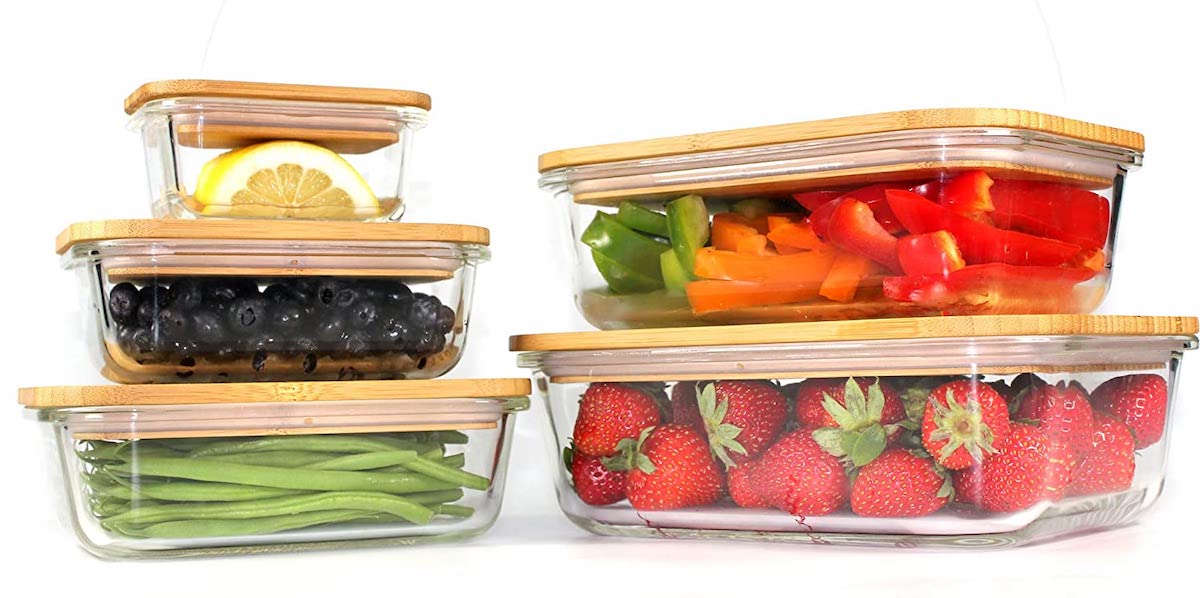
The ironic thing about many food storage containers is that they’re made from plastic, making meal prep not as planet-friendly as it could be. Opt instead for these reusable containers made with recyclable nonporous glass and antibacterial bamboo lids. The set contains five sizes, and each lid operates as its serving plate.
Get the Urban Green Glass Containers With Bamboo Lids (5-pack) at Amazon for $36.99.
22. Bamboo Toilet Paper
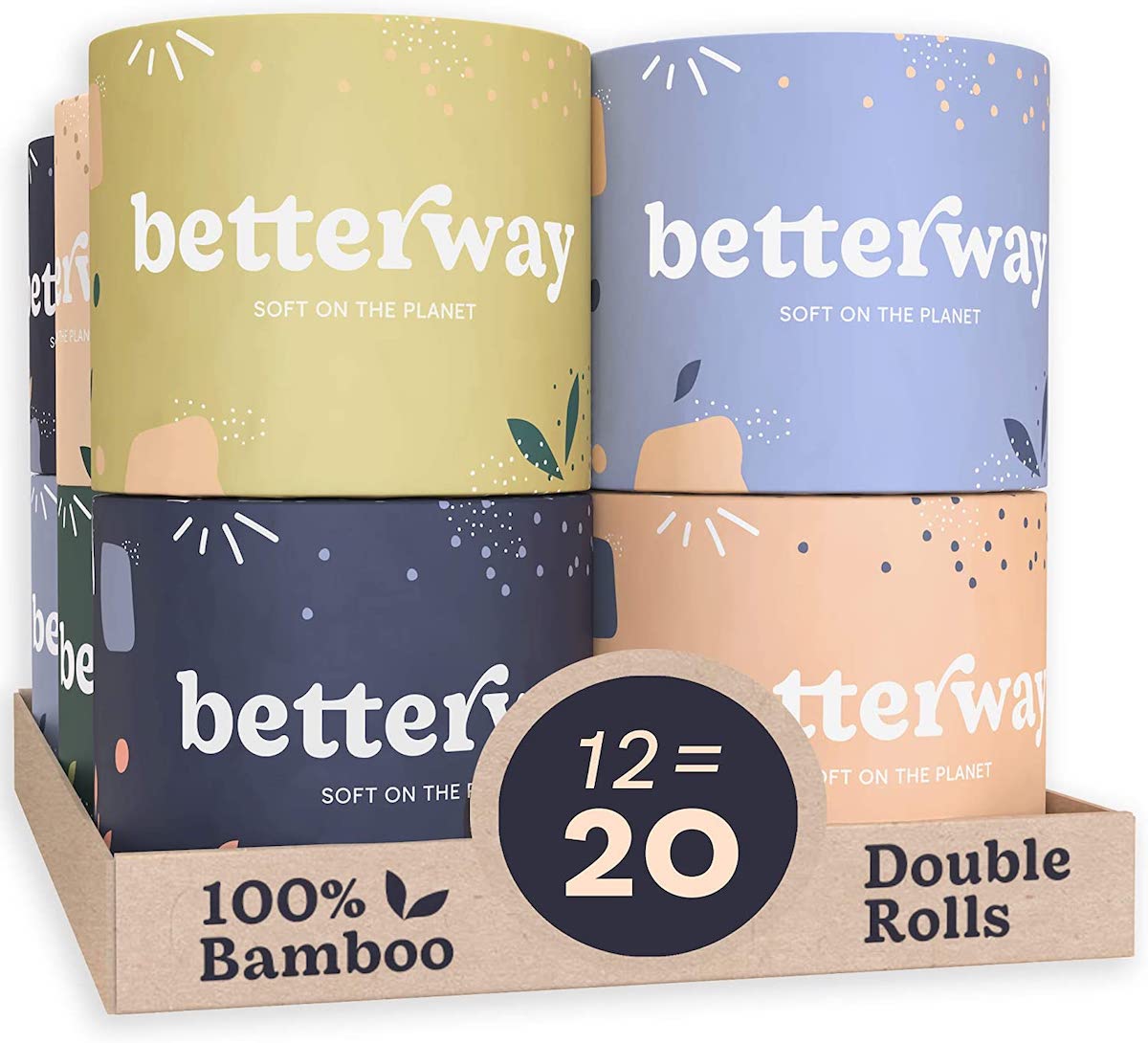
For many people, toilet paper is a necessary evil, but it doesn’t have to be. Instead of trees, this kinder option from Betterway with over 5,000 reviews is made of responsibly sourced bamboo. Its three-ply construction is a great bet if you need your toilet paper to last a little longer while providing ultimate comfort and absorbency.
Get the Betterway Bamboo Toilet Paper (12-pack) at Amazon for $28.49.
23. Stainless Steel Bento Box
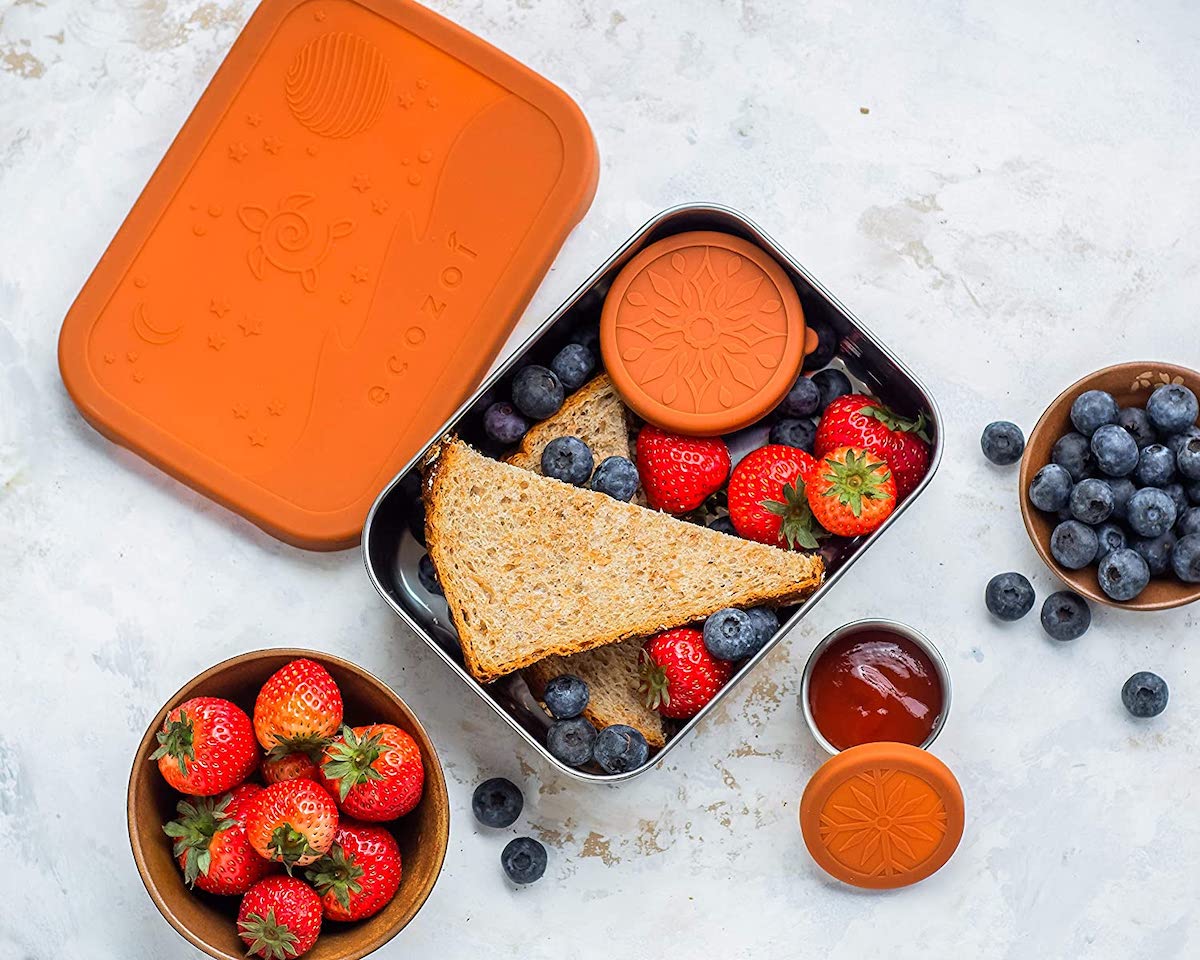
If you take your own lunch to work, kudos to you for the sustainable habit. To keep your packaging plastic-free and better for the planet, grab this stainless steel bento box. It’s dishwasher-safe, and it has the ability to create two or three compartments depending on how you use it. The bento box itself has two large tiers, but you can also remove the included snack pod to create a third section. In total, this roomy bento box holds 6 cups of food.
Get the GreenLunch Stainless Steel Bento Box at Amazon for $38.95.
24. Biodegradable Wipes
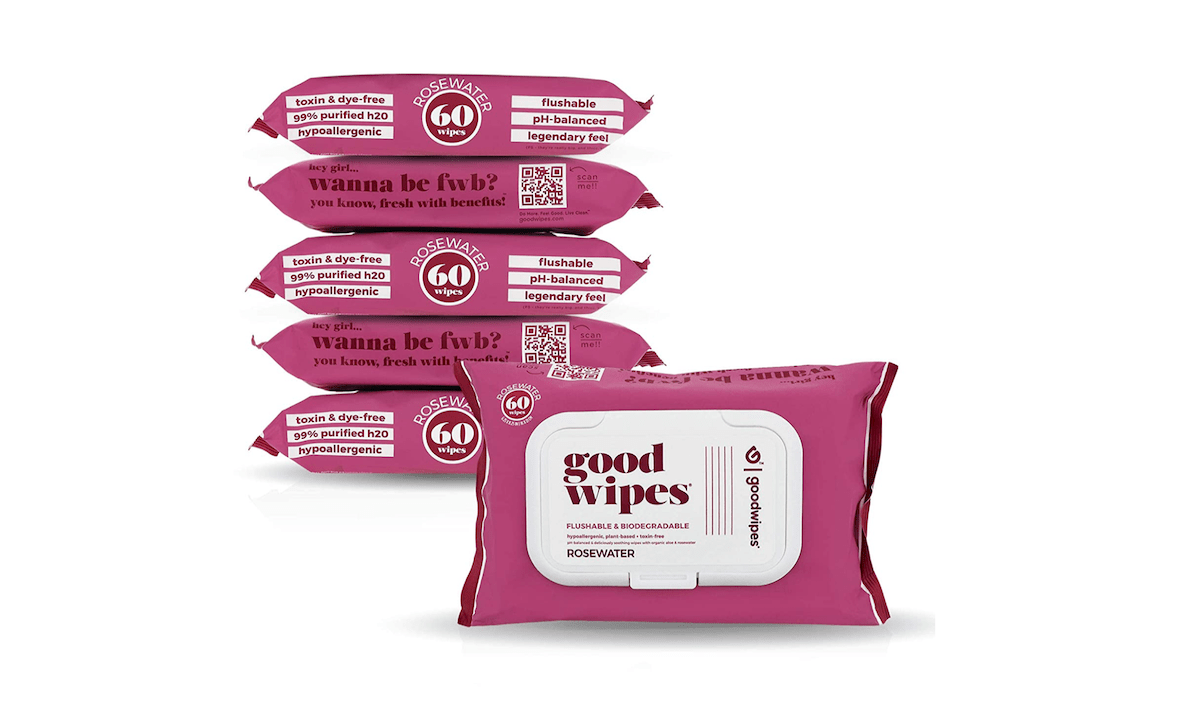
A full shower isn’t always the most economical option, nor is using 30 squares of toilet paper with each bathroom visit. Freshen up the planet-friendly way with these ultra-gentle flushable wipes. They’re made with soothing plant-based ingredients such as chamomile, aloe, lavender, and rose. They come in a recyclable dispenser for easy use and portability.
Get the Goodwipes Flushable Plant-Based Wipes (6-pack) at Amazon for $17.64.
25. Reusable Tissues
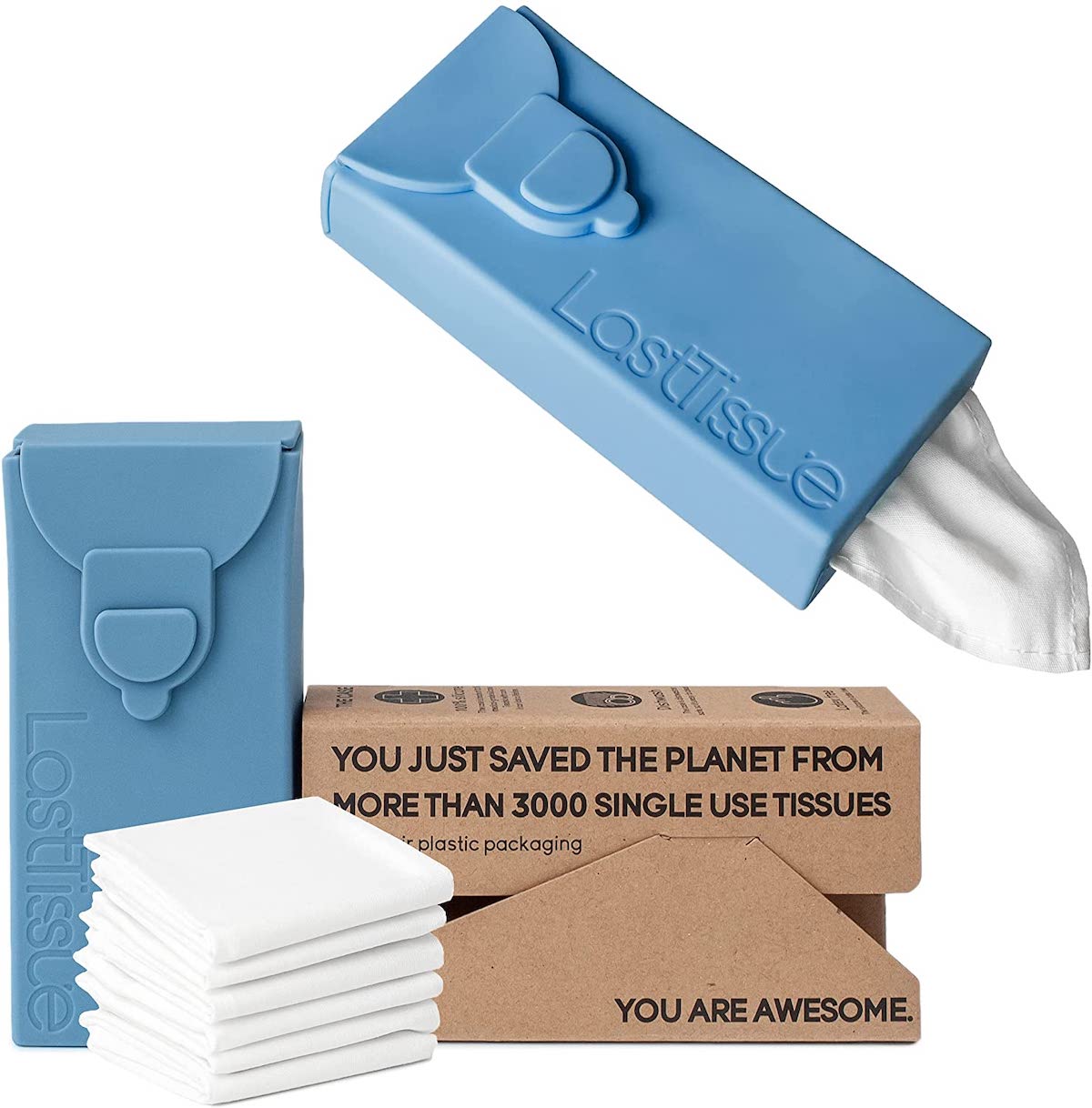
Between cold season, allergy season, and year-round tears of joy, tissues are always crucial to have on hand. Go the sustainable route with a pack of LastTissue, which is said to replace 3,000 pieces of single-use tissues. The silicone case contains six organic reusable tissues with a separate compartment to store soiled ones to prevent cross-contamination.
Get the LastTissue Reusable Organic Tissue Pack (6 tissues) at Amazon for $23.95.
26. Biodegradable Floss

Compared with those giant stacks of printer paper in the office, floss doesn’t make as big an environmental impact, but it’s a great place to start. Unlike its popular silk floss counterpart, this eco-friendly floss is made of bamboo and charcoal that breaks down quickly and comes in recyclable plastic-free packaging. Bonus: 10 percent of its profits go toward environmental conservation efforts.
Get the Me Mother Earth Vegan Biodegradable Dental Floss (2-pack) at Amazon for $12.69.
27. Faux Vine Leaves

Are you constantly replenishing your greenery stash? Keep all that supply chain action to a minimum with a single purchase of these super-popular faux vine leaves. With nearly 41,000 Amazon reviews, this 24-piece set of greenery makes a sustainable addition to wedding arch garlands, party backdrops, tablescape decor, and more.
Get the JPSOR Fake Vines (24 pieces) at Amazon for $13.99.
28. Biodegradable Bandages
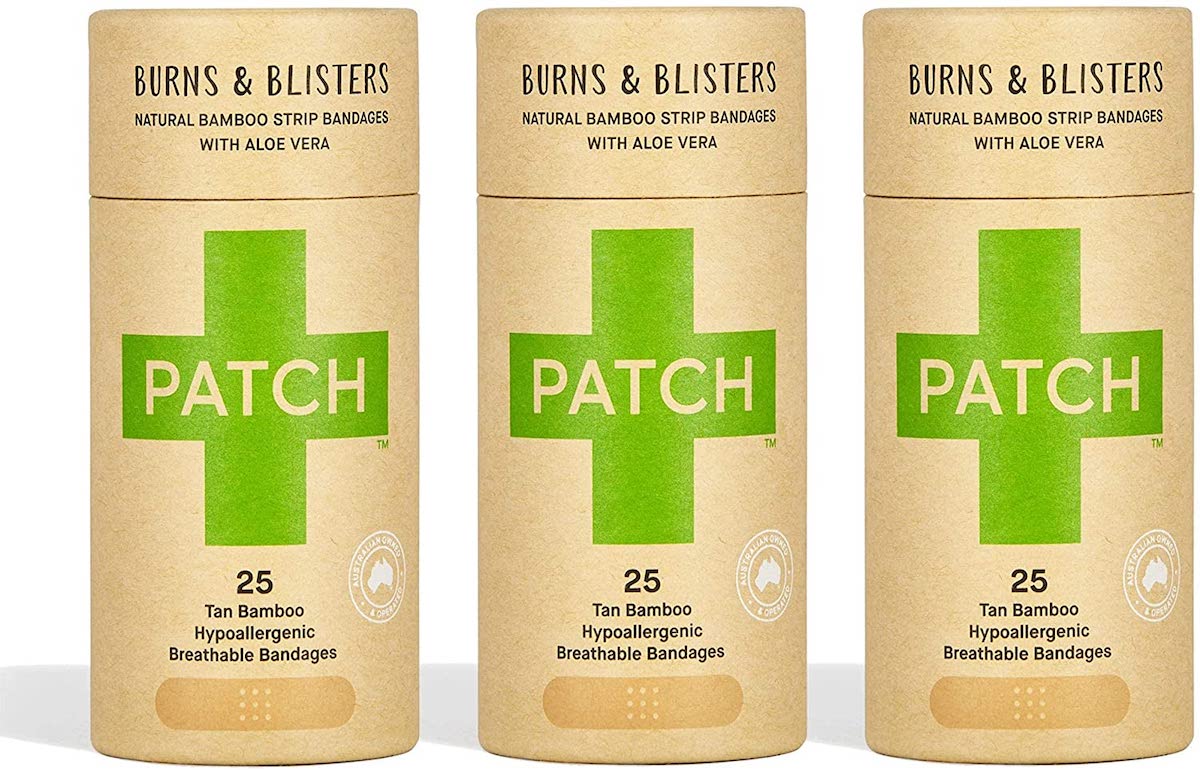
No matter how careful we are, accidents are bound to happen. When protecting your precious skin, do the planet a favor as well with these biodegradable bandages. Plastic-free and made of bamboo, these hypoallergenic bandages decompose in only a couple of weeks, so you won’t have to feel as guilty if one happens to slip off onto the ground during a vigorous game of tag or beach volleyball.
Get the Patch Eco-Friendly Bamboo Bandages(75-count) at Amazon for $21.99.
29. Eco-Friendly Pens
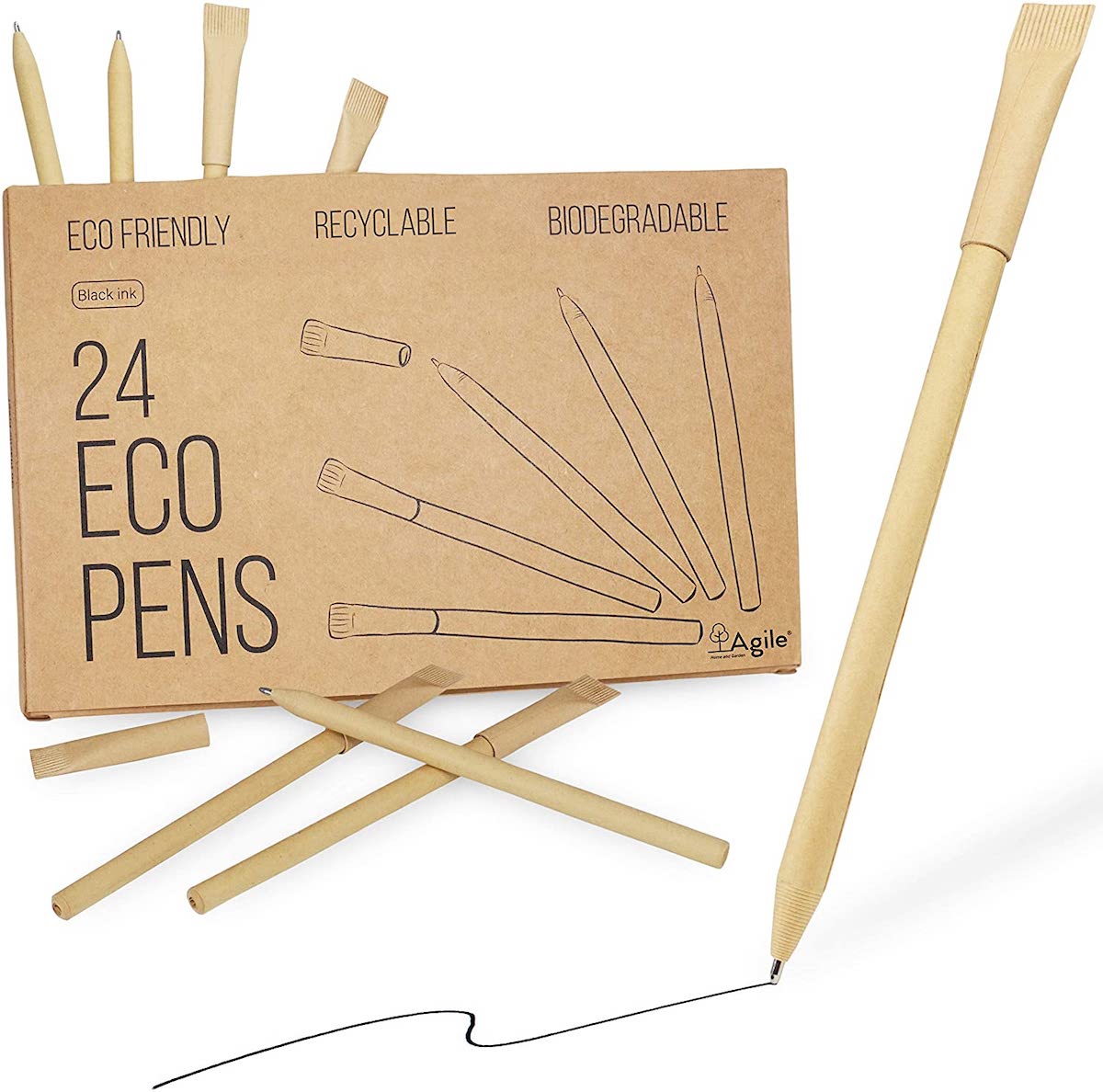
If you tend to go through pens quickly, all that plastic use might be adding up. Reduce your impact with these eco-friendly pens from Bic. They’re made of 97 percent recycled plastic (only the ink cartridge isn’t made of recycled materials), and they come in recyclable packaging, too. Each package includes 50 black pens, and since it’s very affordable, this more sustainable choice is a great pick.
Get the Bic Ecolutions Ballpoint Pens (50-pack) at Amazon for $6.59.
30. Compostable Trash Bags

If you’re looking to get rid of your trash in a way that doesn’t harm the planet, these compostable trash bags are a great option. Durable and tear-resistant, they are designed to completely degrade into humus (organic matter in soil), carbon dioxide, and water when composted, and they come in a tear-off roll for easy dispensing.
Get the SuperBio 2.6 Gallon Compostable Trash Bags (200-count) at Amazon for $32.95.
31. Foaming Hand Soap Tablet Refills
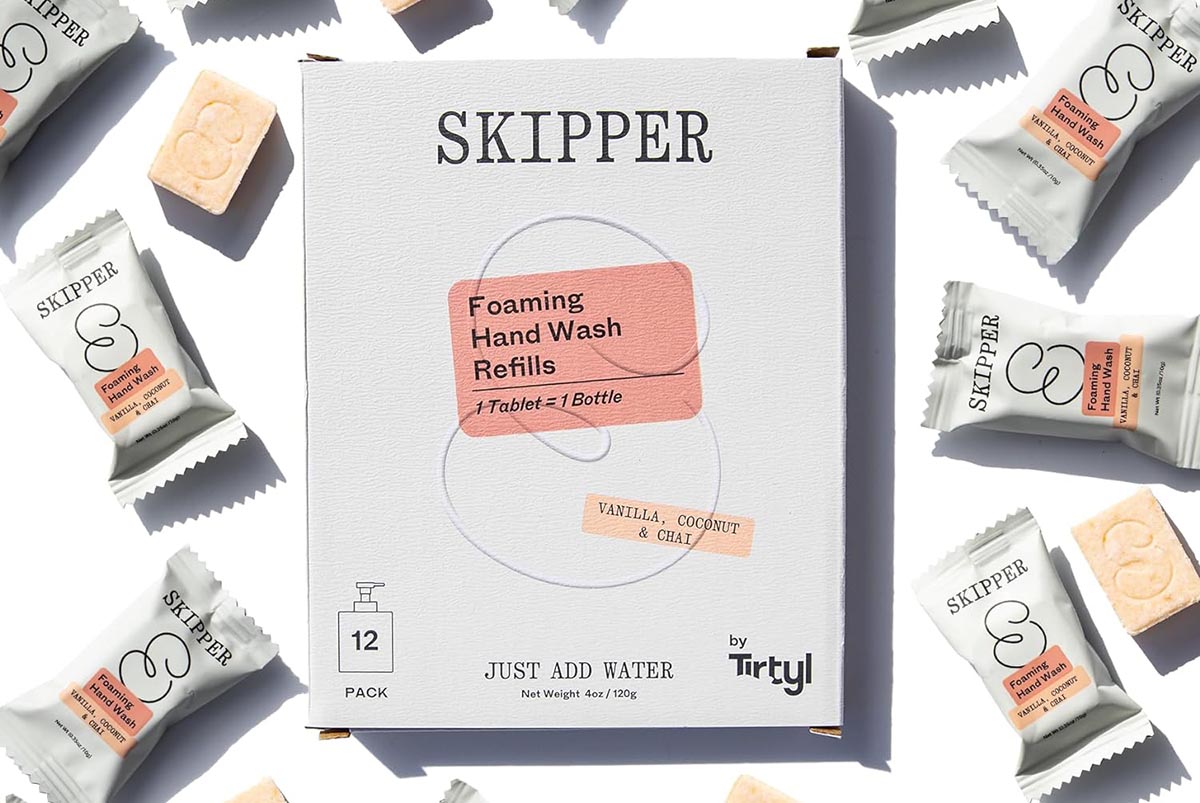
Refill your hand soap without extra plastic packaging using these eco-friendly tablets. When mixed with water, each tablet creates 8 fluid ounces of foaming hand soap that you can put into any foaming soap dispenser. The packaging is also home-compostable, which means when the tablets are gone, there’s no plastic waste left behind.
Get the Tirtyl Foaming Hand Soap Tablet Refills (12-pack) at Amazon for $17.95.
32. Vitamix FoodCycler

Composting is the most eco-friendly way to deal with food scraps. But if you live in an apartment or small home, you might not have the space for a compost bin. This makes a compact food recycler the best alternative. The Vitamix FoodCycler fits on a countertop and reduces organic waste into a compound that’s suitable to mix right into your soil and break down further. Best of all, it gives your soil and plants a great nutrient boost.
Get the Vitamix FoodCycler at Amazon for $399.95.
33. Reusable Straw

Plenty of establishments have switched from plastic to paper straws in the last few years, but at the end of the day, most paper straws still end up in the garbage. If you want a reusable alternative that’s easy to carry, try the Zoku reusable straw. Unlike most steel straws, it is collapsible (collapsing down to 4 inches long), so it’s not a hassle to carry. It also comes with a carry case to keep the straw clean in your bag.
Get the Zoku Reusable Straw and Case at Amazon for $9.99.
34. Solid Shampoo Bar
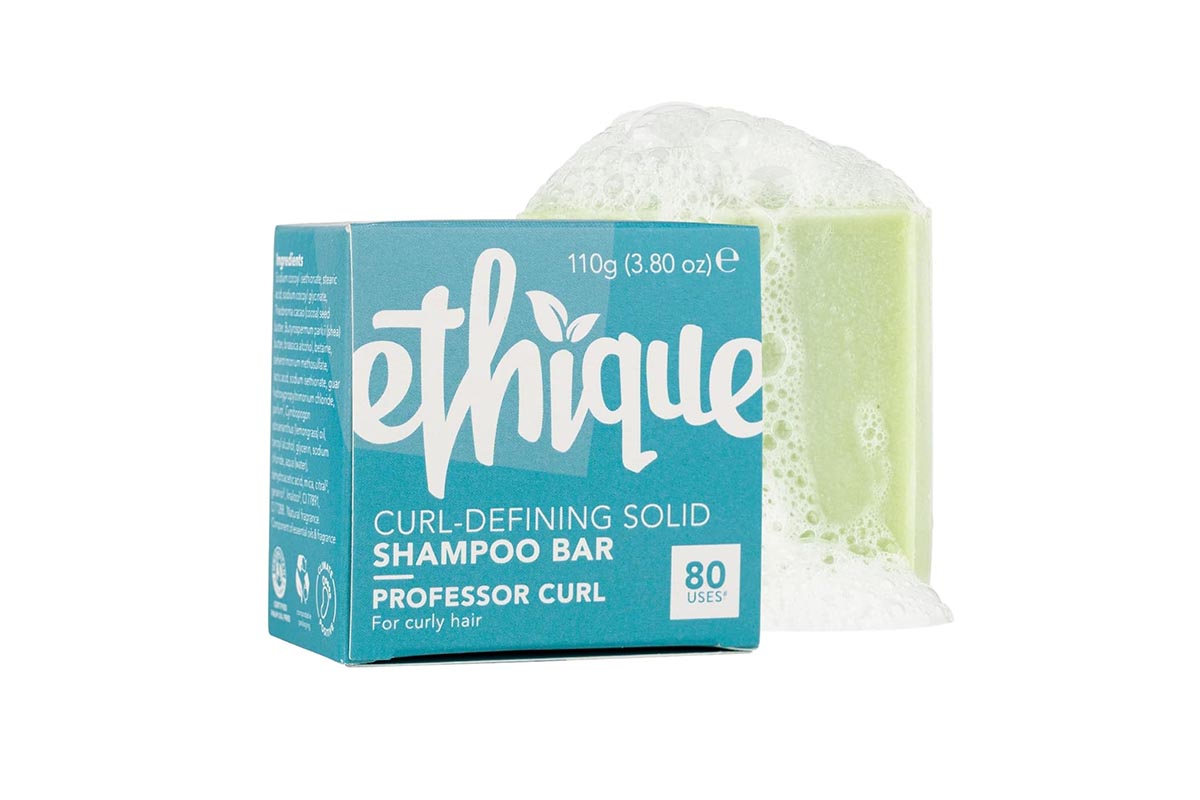
Another place you can eliminate plastic waste is in the shower. Start by getting rid of plastic shampoo bottles and switch to solid shampoo bars instead, like the Ethique Solid Shampoo Bar. It’s completely plastic-free (it comes in recyclable paper packaging) and concentrates its ingredients into an easy-to-use bar. The brand sells a few types, including options to target volume, frizz, dry hair, and define curls, so you won’t be missing out on hair-friendly formulas.
Get the Ethique Solid Shampoo Bar at Amazon for $15.90.
35. Aluminum-Free Deodorant
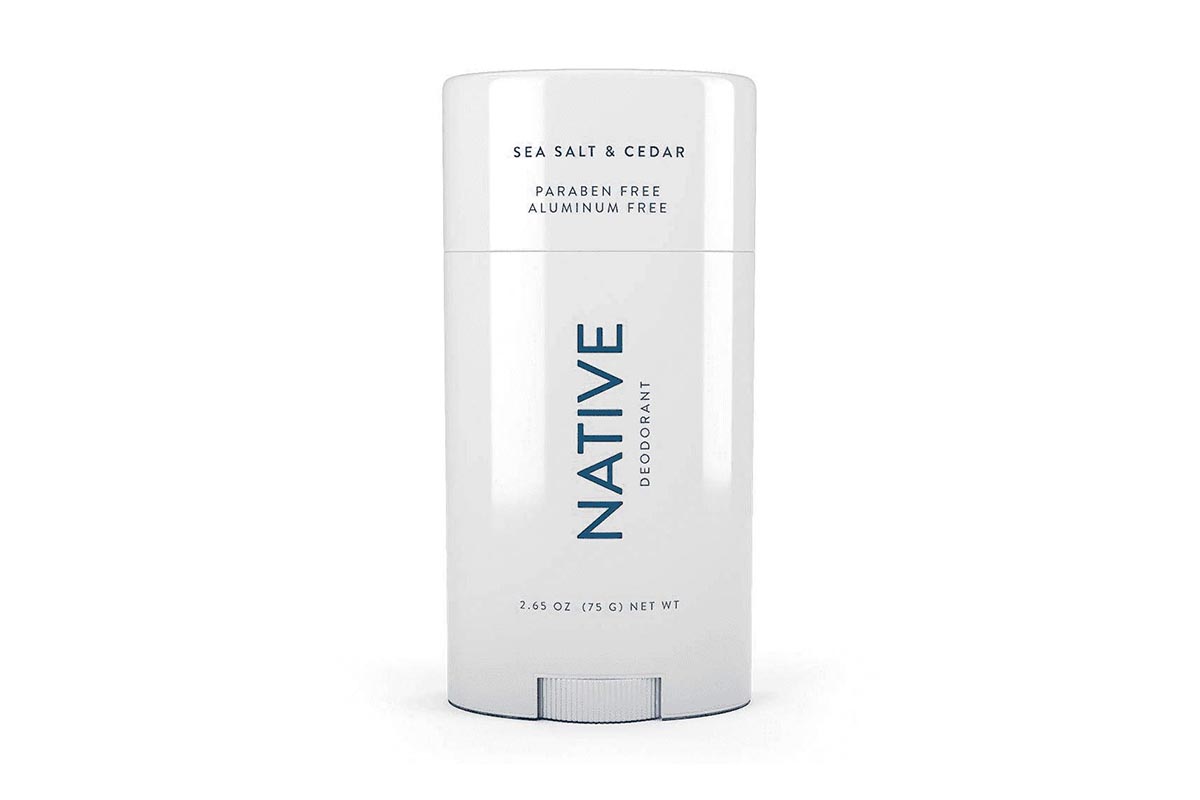
Another toiletry that lets you nix the plastic waste is your deodorant. Try plastic-free Native Deodorant, which comes in paper packaging. This natural deodorant smells lovely, with fragrance options like lavender and rose, cucumber and mint, and citrus and herbal musk, among others. Its list of ingredients is aluminum-free and naturally derived, so it’s a great choice if you’re trying to reduce synthetic ingredients in your hygiene routine.

